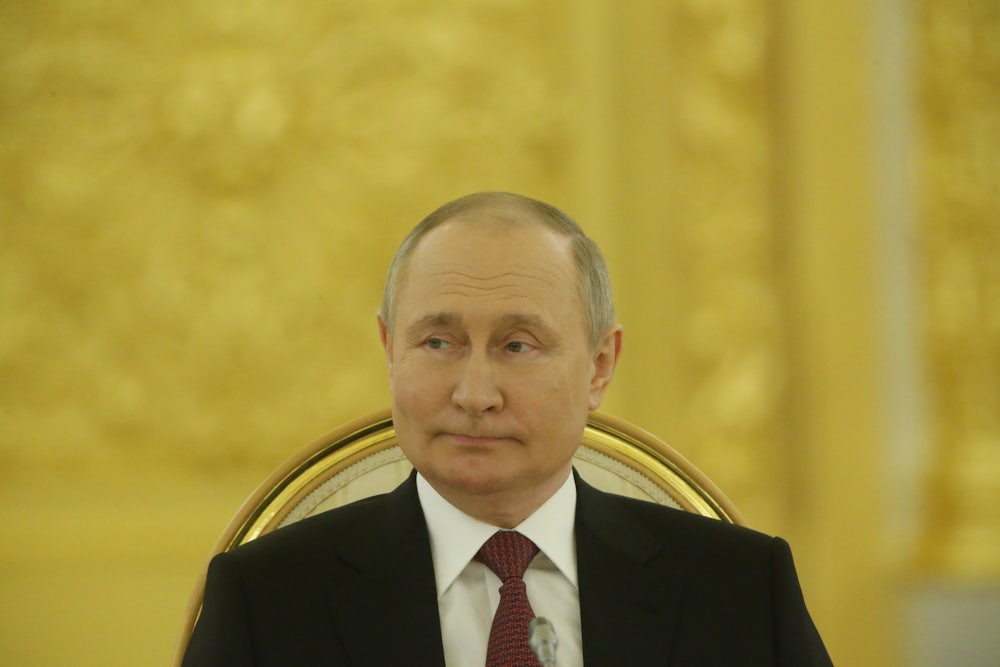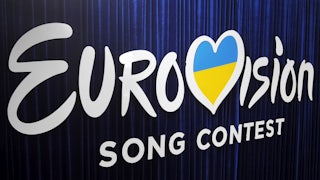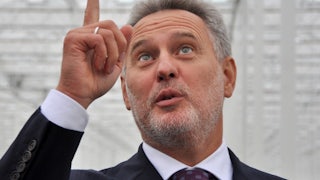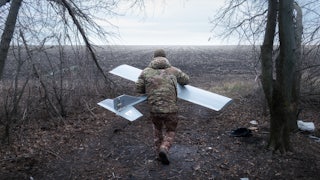Does this scenario sound familiar? The people living around the Baltic Sea fear their powerful neighbor. They understand the value of their territory and worry about being overrun by the military colossus in their midst.
Except the country in question with a huge armed force, a formidable reputation, and sinister intentions is not Russia but Sweden. “The terror of the north, the military wonder of the age, the most active of the Protestant powers” is how the historian Norman Davies described Sweden in the seventeenth and early eighteenth centuries. A series of defeats and setbacks, including Russia’s victory over Sweden during the Great Northern War (1700–1721), shifted the balance of power from Northern Europe to Eastern Europe.
Ever since, Russia has been a decisive factor in Northern European politics. For that reason, Nordic countries have long been wary of doing anything that Russia (or the Soviet Union) could even perceive to be provocative, lest they antagonize Moscow. Henrik Breitenbauch, Dean of the Royal Danish Defense College and a fellow at the Atlantic Council, describes the Nordic strategy as “being nonconfrontational,” with the region serving as a buffer zone between competing interests. During the Cold War and ever since, Sweden and Finland officially remained outside NATO, despite their commonalities with the organization, which is made up primarily of liberal democracies.
But Russia’s invasion of Ukraine has caused an immediate dramatic shift in Sweden and Finland, which have both formally applied to join NATO. On May 17, the Finnish Parliament voted overwhelmingly in support of the application. “It’s been a watershed for public opinion,” says the University of Toronto’s Timothy Sayle, author of Enduring Alliance: A History of NATO and the Postwar Global Order. Whereas some leaders in those countries have favored joining the treaty, the public has usually been more cautious.
No longer. The number of Finns supporting their country’s entry into NATO has doubled since February. Sweden’s bid is a departure from 200 years of nonalignment, although informally the country has cooperated with NATO for years. “The shift is entirely about Russia,” says Breitenbauch. Swedish Prime Minister Magdalena Andersson said, “We’re facing a fundamentally changed security environment in Europe.” The country’s traditional nonalignment strategy no longer serves the country well.
Finland’s evolution is particularly monumental because it has been a pivotal country in confrontations between Moscow and the West. In the closing days of World War II, Soviet leader Josef Stalin began pressuring Finland to enter the Soviet Union’s sphere of influence. Finland retained as much independence as it could—including its parliamentary form of government, mixed-market economy, and strong civil society—in exchange for granting the Soviets a veto over its foreign policy. This extortion campaign led to fears that other Nordic countries would be threatened, particularly Norway. “It was impending threats against Norway that led to [British Foreign Minister] Ernest Bevin’s real efforts to build an Atlantic Pact,” says Sayle.
In the 1990s, Sweden and Finland joined the European Union, separating themselves from countries like Russia, Ukraine, and Belarus, which looked less favorably on the West. And as Kimberly Joy Marten of Barnard College at Columbia University says, culturally and politically, Sweden and Finland have affinities with NATO. “NATO has always seen itself as a values-based” organization, she says. Partly for that reason, it seems like every Nordic country should be a member of NATO. Sayle says that in the 1990s, if you asked ordinary Swedes whether their country was a NATO member, many would think it was.
In 2014, Russia invaded and annexed Crimea, upending the European security architecture. After that, says Marten, Sweden and Finland began working more closely with NATO. In that sense, “it’s been a gradual increase; this [application announcement] just makes it official,” she says. “It’s confirmation of the direction they were along.” February’s invasion merely clarified the stakes, particularly as Russian troops have reportedly engaged in massacres in Ukraine. “The terrible atrocities convinced people at the popular level that Russia is not just an ordinary state,” says Marten. The geographical proximity of the war in Ukraine brought home the danger of Russia to Nordic populations, says Breitenbauch.
For the two applicants, joining NATO guarantees them protection from Russia (or in theory any other state, although no others are threatening). NATO, in turn, gains further legitimacy as an organization comprised mainly of European liberal democracies. More concretely, NATO’s defense of Balkan states would be made easier by access to Finland’s and Sweden’s territories, because the organization could surround the enclave of Kaliningrad, Russia’s most heavily armed and most European-facing region. That is one reason these states are strongly supportive of accepting the new Nordic applicants. Finnish intelligence and comparably robust defense capabilities are also important assets, the nation having prepared for war with Russia for decades.
But NATO—which the United States militarily dominates—will be assuming an additional burden if it accepts Finland and Sweden as new members, as it is likely to do. Finland shares a huge border with Russia, and there are still living veterans of the Winter War, when the Soviets invaded their Finnish neighbors. On March 12, Russia’s Foreign Ministry threatened the applicants for trying to join NATO. “Russia will be forced to take retaliatory steps, both of a military-technical and other nature, in order to stop the threats to its national security that arise in this regard,” read the ministry’s statement. Already, Russia has cut off some of its electricity supplies to Finland. Despite its setbacks in Ukraine, Russia is still a powerful country with immense capacity to injure nations close to its borders. For this reason, some have warned against adding two new members to NATO.
However, on May 16, Russian leader Vladimir Putin signaled a different perspective, saying that Russia is unthreatened by the prospect of Sweden and Finland joining NATO. “As far as expansion goes, including new members Finland and Sweden, Russia has no problems with these states—none. And so in this sense, there is no immediate threat to Russia from an expansion to include these countries,” he said.
Given that Putin has for years loudly and repeatedly cited previous rounds of NATO expansion as antagonistic to Russia, his comments are remarkable. They suggest that the Russian leader understands that his botched war in Ukraine has diminished his power, or perhaps he realizes that threatening Finland and Sweden has backfired to date.
However, Putin made one important qualification when blessing the potential new NATO members. “The expansion of military infrastructure into this territory would certainly provoke our response,” he said. Should NATO move troops or nuclear weapons onto Swedish or Finnish soil, Russia would grow much more concerned.
So long as NATO avoids taking this step, however, it might be able to have it both ways: expand its alliance to include two model members while steering clear of significantly angering a recalcitrant Russia that is already significantly angry. If and when Finland and Sweden join NATO—the applications are being fast-tracked and will almost certainly be approved—their membership will mark an important loss for Russia. And, as Finnish leaders have told Putin, he has nobody but himself to blame for the defeat.








